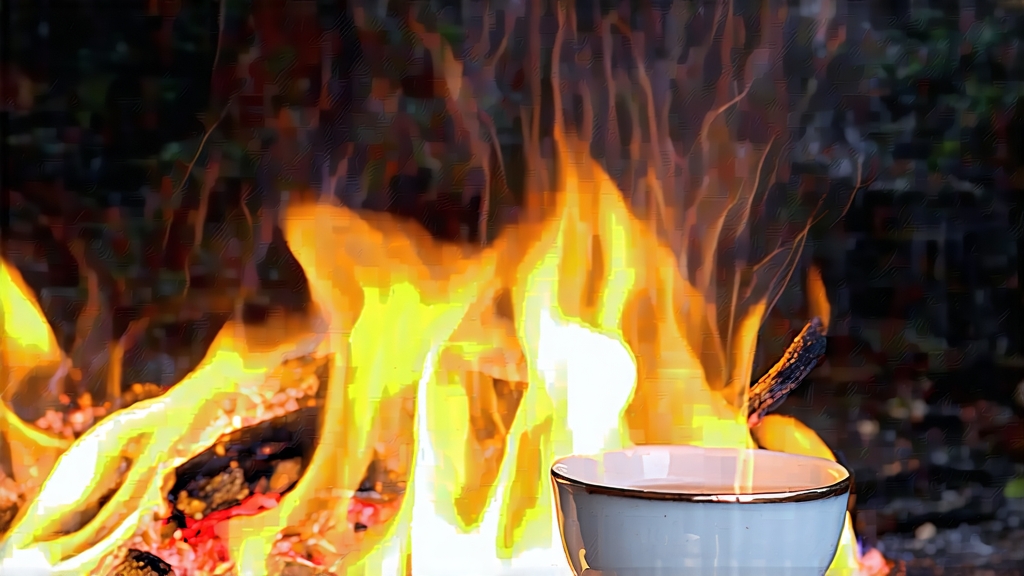
When European tea drinkers first encountered the dark, crinkled leaves that brewed into a bright crimson liquor in the late seventeenth century, they were tasting Lapsang Souchong—long before Assam, Ceylon, or Keemun ever reached the docks of London or Amsterdam. Hailing from the granite gorges of Tongmu Guan deep inside China’s Wuyi Mountains, this is the black tea that launched a global obsession. Its name alone carries the romance of two Chinese words: “Lapsang,” meaning pine wood, and “Souchong,” referring to the fourth or fifth leaf traditionally plucked later in spring when the leaf is broader, fleshier, and capable of absorbing the penetrating aroma of fresh pine smoke.
1. A Brief History Written in Smoke
Local legend credits a passing army for the birth of smoked black tea. In the tumultuous Qing dynasty, soldiers supposedly commandeered a tea factory; anxious farmers, desperate to dry their leaves before the troops returned, rushed the withering over open pine fires. The accidental result—leaves imbued with a haunting resinous perfume—was an instant hit with Dutch traders who carried it to Europe in 1604. By the early 1700s, Lapsang Souchong commanded prices higher than silver in London auction houses, earning the nickname “bohea” (from the Min-Bei pronunciation of Wuyi) and inspiring British botanists to steal both seeds and know-how in order to break China’s monopoly. Thus, every modern black tea—from Assam’s malty briskness to Darjeeling’s muscatel—owes its existence to the techniques first perfected on those mist-veiled cliffs.
2. Terroir: Where Rock, River, and Pine Converge
Tongmu Guan sits inside a national nature reserve at 27° north latitude, 1,200 m above sea level. Subtropical monsoons collide with cool air sliding off the granite peaks, trapping perpetual fog that diffuses sunlight into a soft, silvery glow. The soil is a thin, acidic layer of weathered volcanic tuff rich in potassium and manganese—minerals that translate into a natural sweetness in the leaf. Indigenous pine species (Pinus massoniana and Pinus taiwanensis) carpet the valleys; their resinous heartwood supplies the smoke that defines the tea. Because the reserve is now a UNESCO site, only a handful of certified family workshops may still produce authentic Lapsang Souchong, making every kilo a liquid snapshot of an ecosystem under protection.
3. Leaf Grades and Variations
Although outsiders often equate Lapsang Souchong solely with its smoky aroma, connoisseurs recognize three distinct styles:
- Traditional Pine-Smoked (Zhengshan Xiaozhong): Crafted within the 60 km² core zone; leaves wither over pine embers, then oxidize and are finally hot-smoked again. The best grades use young spring buds (Jin Jun Mei) that yield a honeyed, almost cocoa-like cup beneath the smoke.
- Wu Xiang (Unsmoked) Xiaozhong: A modern response to international palates; processed like a standard black tea but kept within Tongmu terroir. It offers dried-longan sweetness and a mineral finish reminiscent of Wuyi rock oolong.
- Specialty Bud Variants: Jin Jun Mei (Golden Beautiful Eyebrow), Yin Jun Mei (Silver), and Cu Jun Mei (Coarse) are picked sequentially from the same bush. Only Jin Jun Mei contains solely buds, producing a liquor so refined that the pine smoke reads as a whisper of incense rather than campfire.
4. Craftsmanship: Turning Green into Smoke-Kissed Copper
Authentic production follows a meticulous six-step sequence that has changed little since the Kangxi era:
- Plucking: Only after Guyu (Grain Rain) when leaves have grown thick but still tender. Two leaves and a bud are eschewed in favor of the larger souchong leaf.
- Withering: Bamboo trays are slid into a “qing lou,” a three-story wooden structure whose ground floor holds smoldering pine embers at 80 °C. The leaf loses 60 % moisture over four hours while absorbing volatile phenols—guaiacol and syringol—that create the signature smoke note.
- Rolling: Once limp, leaves are rolled for 45 minutes to rupture